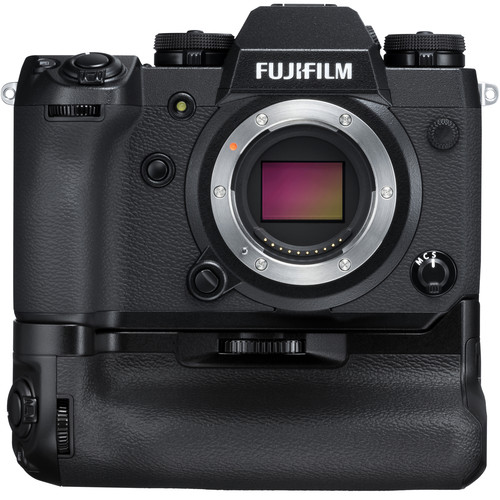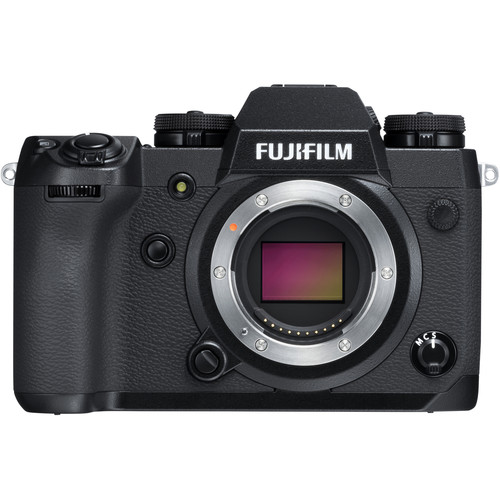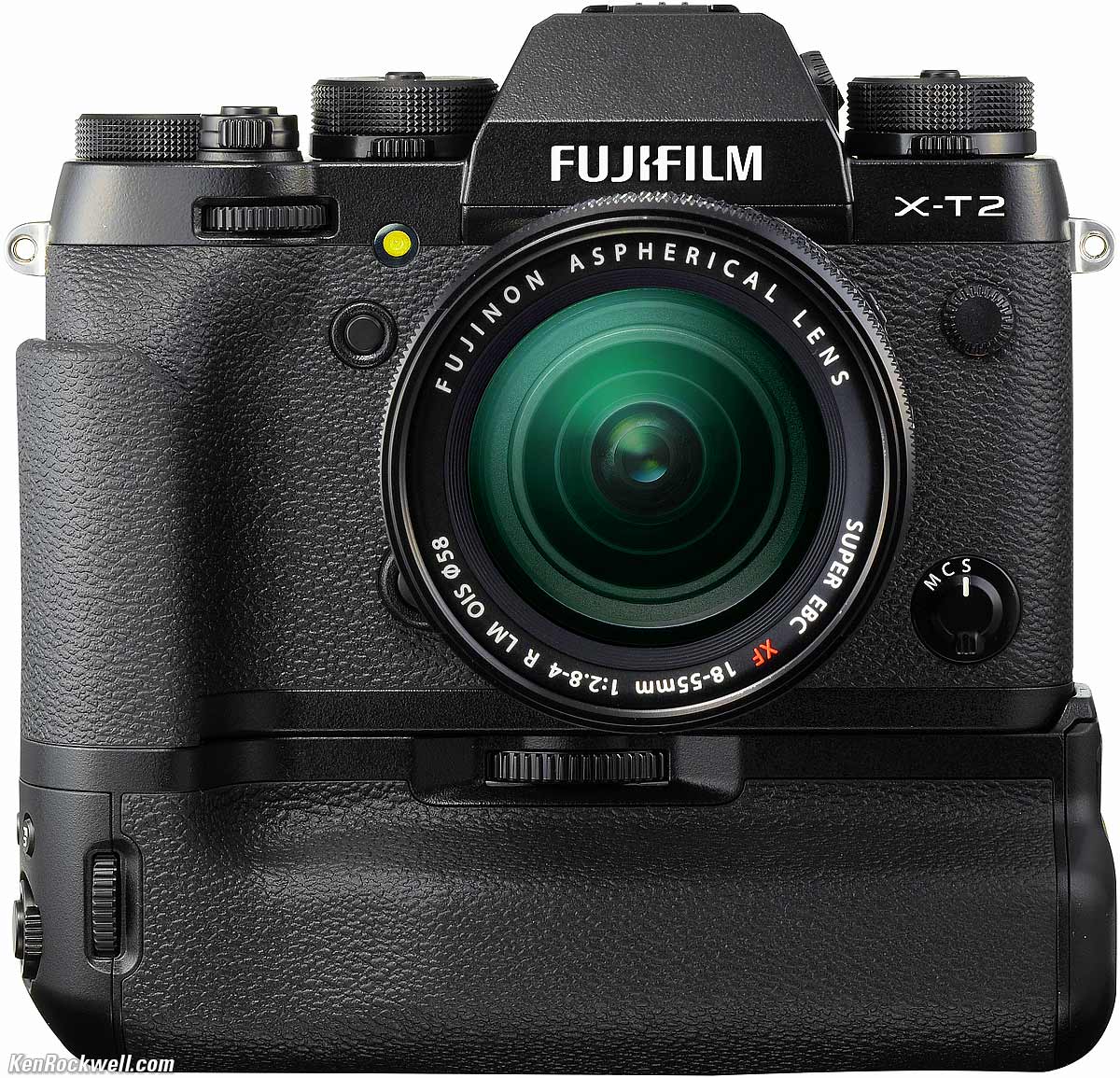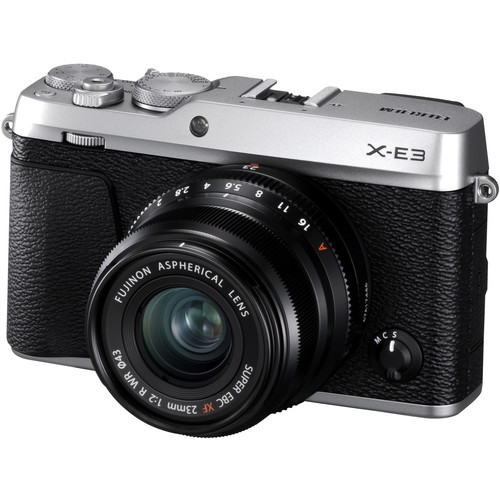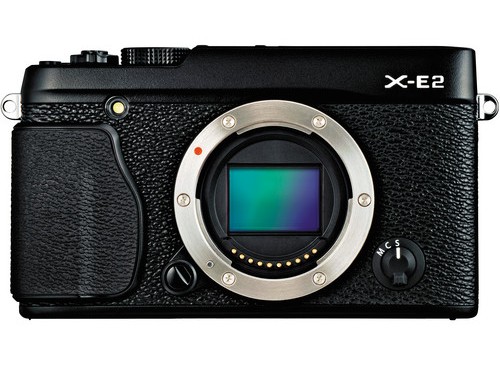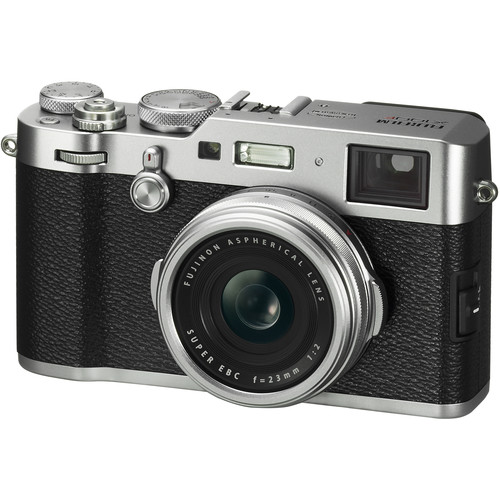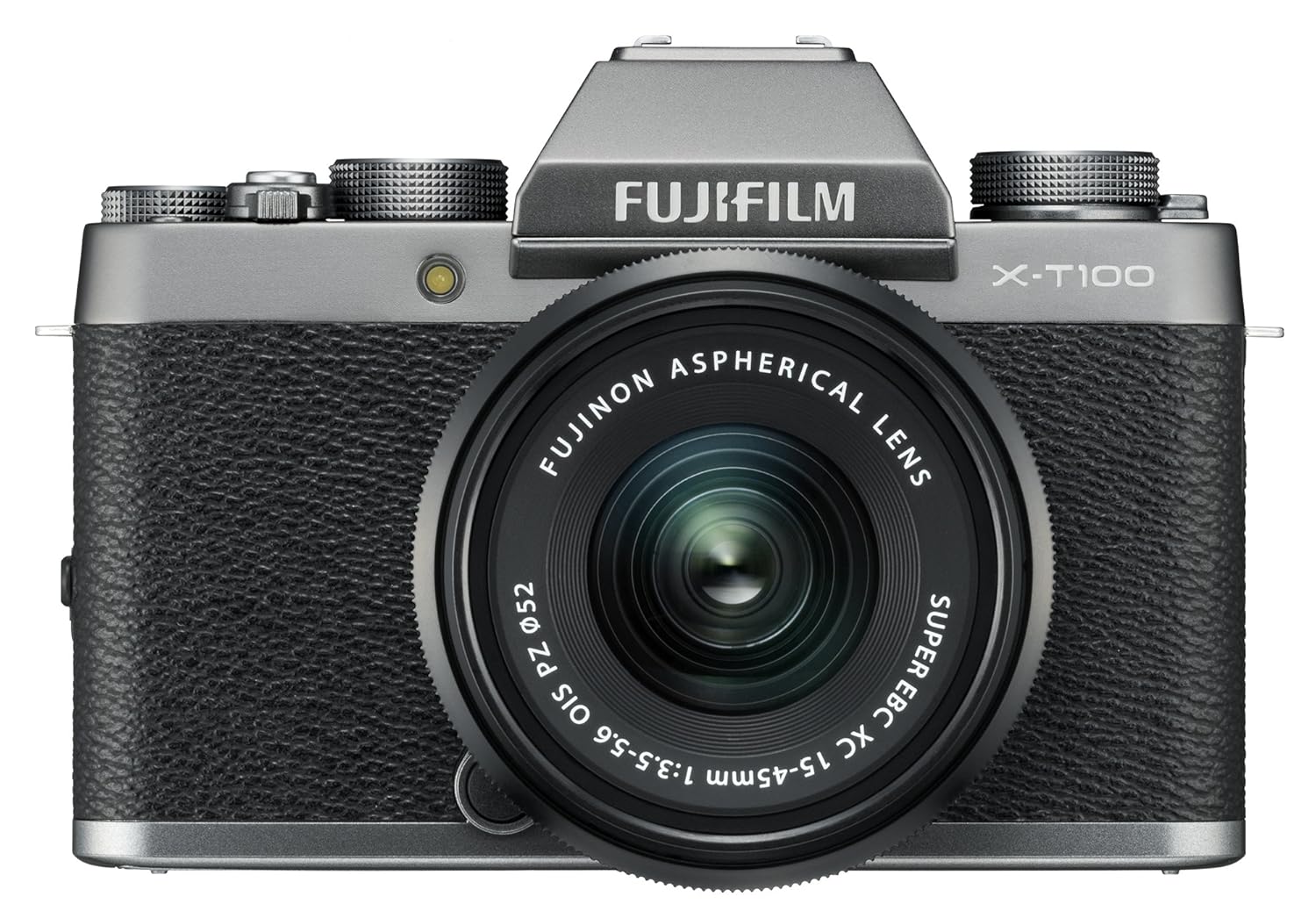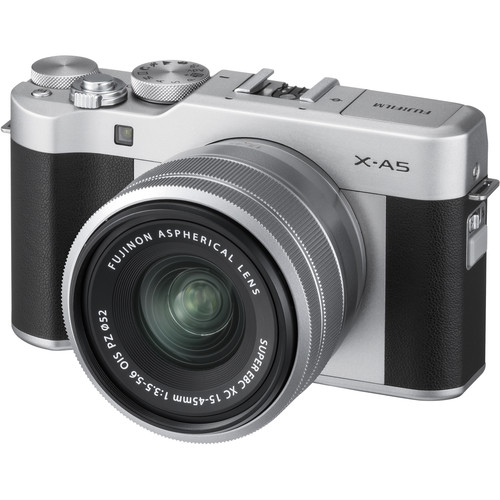In just a few short years, Fujifilm has built an impressive camera system from the ground up. Starting with the introduction of the X100, which they launched in September 2010, they’ve since expanded their lineup to include a number of highly advanced interchangeable and fixed lens compact cameras that have completely stirred up the photography world.
Shooters of all styles and levels have fallen in love with their compact, classic body styling and with the remarkable image quality that these cameras produce. So much so that an increasing number of amateurs and pros alike have replaced their entire DSLR rigs with Fuji X camera systems and haven’t looked back. I’m one of those people.
Even straight JPEGS from these cameras look awesome, which has prompted many people to rethink their RAW-only shooting style. The images are incredibly sharp and combined with Fuji’s image processing technology, color reproduction is stunning. The built-in film simulations and different shooting modes offer wide creativity and the resolution of the APS-C X-Trans sensor which is found on most of the models is certainly good enough for any pro work.
Here’s a quick comparison between all of the current Fuji X cameras in the lineup to see which one is right for you. (Updated August 2018)
1. Fujifilm X-H1
The new Fujifilm X-H1 is the latest X Series camera. Featuring an even more rugged all-metal body and a brand new 5-axis, 5.5 stop stabilized sensor, this is the first model in the lineup to have In-Body Image Stabilization.
Built to be an all-professional camera in every way, the X-H1 has a larger pronounced grip, a 25% thicker chassis, and the same 24MP X-Trans sensor found in all the other X Series cameras.
In addition, the X-H1 has been designed as a high-end video camera. It offers DCI-4K shooting at 200 Mb/s, which is double the bit rat of the X-T2, and it shoots beautiful slow motion in Full HD at up to 120 fps. It also features F-log recording right to the SD card, separate camera settings for shooting stills and video, and it has the brand new cinematic ETERNA film simulation.
Using the same 325-piont AF system found on the X-T2, the X-H1 has upgraded AF algorithms, which allow for even better AF tracking when using AF-C mode. It also has the highest resolution electronic viewfinder of any X Series camera, with a full-time refresh rate of 100 fps.
The biggest design difference on the X-H1 is that instead of the EV +/- dial, the camera has a new top deck LCD. It’s very similar to the layout of the GFX. With a total of 13 Fn buttons/controls and the optical Vertical Power Booster Grip, the X-H1 is a true powerhouse, and with it’s familiar look and feel, it should appeal to DSLR users who have been X curious for awhile, but have been waiting to pull the trigger.
You have no more excuses. Read about the X-H1 at Fujifim’s special X-H1 site.
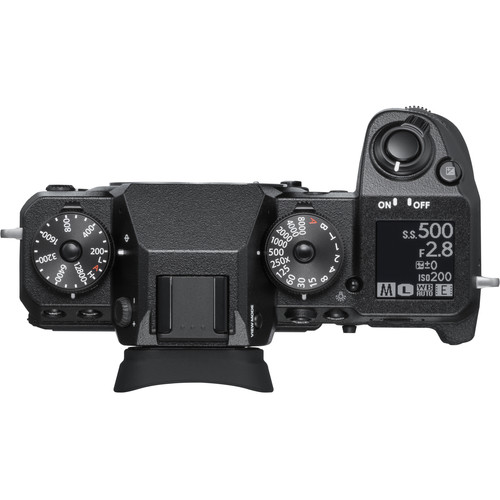
[iframe]<iframe width=”120″ scrolling=”no” height=”240″ frameborder=”0″ style=”border:none;” border=”0″ src=”https://mer54715.datafeedfile.com/widget/aff_widget_prdt_generate-2.0.php?aff_num=6746&aff_net=1&widget_num=8067&sid=” marginheight=”0″ marginwidth=”0″></iframe><iframe style=”width:120px;height:240px;” marginwidth=”0″ marginheight=”0″ scrolling=”no” frameborder=”0″ src=”//ws-na.amazon-adsystem.com/widgets/q?ServiceVersion=20070822&OneJS=1&Operation=GetAdHtml&MarketPlace=US&source=ss&ref=as_ss_li_til&ad_type=product_link&tracking_id=danhbaisadvph-20&marketplace=amazon®ion=US&placement=B079PTRNKK&asins=B079PTRNKK&linkId=1fdb2eeaca1882b9533d62e651b0a6d8&show_border=true&link_opens_in_new_window=true”></iframe>[/iframe]
2. Fujifilm X-T2
Earlier this summer, Fujifilm announced the X-T2. Featuring the new 24MP X-Trans III sensor and a much more powerful image processor, the X-T2 has been refined for maximum performance in every way, and it produces incredible high resolution imagery.
With a body design that’s almost identical to the X-T1, the “2” features a few tweaks, like dials that lock and unlock, and a new +/- EV control that lets you adjust by up to 5 stops. The camera also has the new AF joystick
Inside, the X-T2 has a brand new, vastly upgraded, 325-point AF system that will track moving subjects at up to 8 frames per second, and with the optional battery grip in “Boost” mode, the camera will shoot and track at 11 frames per second.
In addition, the X-T2’s new processor allows for improved color accuracy, considerably shorter blackout time, higher EVF refresh rate, and it allows the use of Fuji’s ACROS black and white film simulation. ACROS is built around a more complex grain structure and it produces image with deeper, finer tonal gradation.
With its performance enhancements, the new Fujifilm X-T2 is a stunning evolution of the X Series It’s a professional grade camera that will outperform just about any camera in its price range, and compete with many DSLRs that cost even more.
Who’s it for? The X-T2 is designed for photographers who want maximum performance in a lighter weight, smaller body. It will no doubt attract DSLR shooters who are tired of carrying heavy gear, but who have sat on the sidelines, waiting for a mirrorless camera that will give them the same quality and speed they’re used to. The X-T2 is likely going to be the camera that causes many photographers to finally switch from DSLR to mirrorless. Read my full review of the Fujifilm X-T2 here.
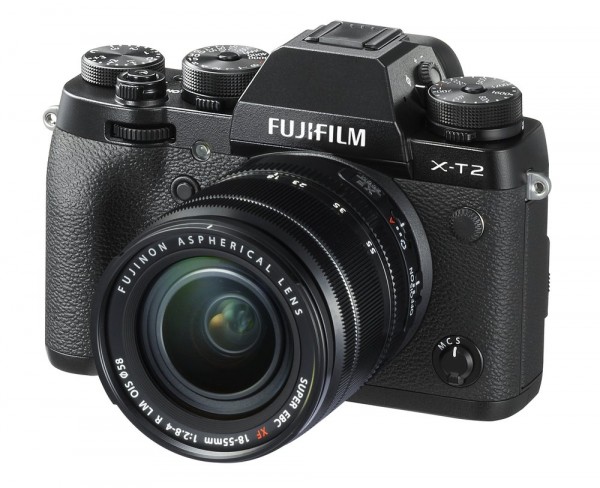
Your advice on lenses and on why you switched to the Fuji have helped make my decision to continue investing in the system. I do a lot of hiking, mountain biking and skiing, but at first was a little apprehensive on committing to the system. Your review of the X-T2 was very helpful.
I have just bought an X-T2 so your articles on the Fuji X system have been very useful.
Your review of the Fujinon 18-135mm lens helped me decide to include it in the minimal, lightweight system I wanted to shoot with ( I decided to go with just that and the 10-24mm - so far, anyway!).
[iframe]<iframe width=”120″ scrolling=”no” height=”240″ frameborder=”0″ style=”border:none;” border=”0″ src=”http://mer54715.datafeedfile.com/widget/aff_widget_prdt_generate-2.0.php?aff_num=6746&aff_net=1&widget_num=7294&sid=” marginheight=”0″ marginwidth=”0″></iframe><iframe width=”120″ scrolling=”no” height=”240″ frameborder=”0″ style=”border:none;” border=”0″ src=”http://mer54715.datafeedfile.com/widget/aff_widget_prdt_generate-2.0.php?aff_num=6746&aff_net=1&widget_num=7295&sid=” marginheight=”0″ marginwidth=”0″></iframe><iframe style=”width:120px;height:240px;” marginwidth=”0″ marginheight=”0″ scrolling=”no” frameborder=”0″ src=”//ws-na.amazon-adsystem.com/widgets/q?ServiceVersion=20070822&OneJS=1&Operation=GetAdHtml&MarketPlace=US&source=ss&ref=as_ss_li_til&ad_type=product_link&tracking_id=danhbaisadvph-20&marketplace=amazon®ion=US&placement=B01I3LNMAM&asins=B01I3LNMAM&linkId=61f7d971b8766adc8e5d42e401d1ec38&show_border=true&link_opens_in_new_window=true”></iframe>[/iframe]
3. Fujifilm X-Pro 2
The Fuji X-Pro 2 is the co-flagship model of the X Series. It’s a professional grade interchangeable X camera that offers traditional styling, maximum quality imagery with the APS-C 24MP X-Trans III sensor, the new X Processor Pro engine and an innovative “Hybrid Multi Viewfinder.” Combining the best features between optical and electronic viewfinders, the X-Pro 2 lets you switch between OVF mode and EVF mode. Both modes contain a variety of shooting data and change magnification depending on your lens choice.
The X-Pro 2 features a similar set of features as the X-T2, including the focus lever joystick, Q-Menu, an upgraded autofocus system with 77 phase detect points, no apparent shutter lag, and all the gorgeous looking film simulations. It’s also weather sealed.
The X-Pro 2 does not have a built-in flash, but it’s compatible with any of the dedicated Fuji flashes, as well as other third party brand units.
The other big difference between is that while the X-T2 has an SLR inspired look and feel, the X-Pro 2 has a rangefinder design, which appeals to a great number of shooters. Where the X-T2 feels like an old trusty manual Nikon body, the X-Pro 2 feels like an old Leica or Contax.
Who’s it for? The X-Pro 2 is a favorite with commercial, wedding and portraits shooters, as well as street photographers. Basically anyone who loves the rangefinder look, who wants weather sealing, fast AF tracking and wants a high quality, beautifully styled camera for general shooting, travel, people or landscape photography. Check out the dedicated X-Pro 2 info site here.
[iframe]<iframe width=”180″ scrolling=”no” height=”150″ frameborder=”0″ style=”border:none;” border=”0″ src=”http://mer54715.datafeedfile.com/widget/aff_widget_prdt_generate-2.0.php?aff_num=6746&aff_net=1&widget_num=7499&sid=” marginheight=”0″ marginwidth=”0″></iframe><iframe style=”width:120px;height:240px;” marginwidth=”0″ marginheight=”0″ scrolling=”no” frameborder=”0″ src=”//ws-na.amazon-adsystem.com/widgets/q?ServiceVersion=20070822&OneJS=1&Operation=GetAdHtml&MarketPlace=US&source=ss&ref=as_ss_li_til&ad_type=product_link&tracking_id=danhbaisadvph-20&marketplace=amazon®ion=US&placement=B01A8DUR74&asins=B01A8DUR74&linkId=c8c66162b05f625e3d79443ad06993f8&show_border=true&link_opens_in_new_window=true”></iframe>[/iframe]
4. Fujifilm X-E3
The X-E3 is a sweet little camera! It’s marketed as the little brother/sister rangefinder model in the series, but it’s actually a very powerful model. It has the new AF joystick/selector that’s found on all the higher end models, and it also has a number of settings that are only found on the top-end X Series cameras.
In fact, there are at least a couple of settings that are only found on the X-T2 and X-E3. It’s a great performer, and it has such a svelte, sexy design. In order to make the camera even smaller, the X-E3 doesn’t have the standard “Thumb Pad/OK Button” array on the back.
Instead, it features a new, innovative touch screen that allows for “swipe gestures” up, down, left and right. These gestures operate as Function buttons, since the four D-Pad Fn buttons are gone.
The X-E3 also has the same 24MP X-Trans sensor, image processor and autofocus system as the X-T2 and X-Pro2, so it’s a very capable camera for shooting all kinds of subject matter. In addition, it shoots 4K video, it allows for continuous shooting of up to 14 frames per second, and has an extended ISO range of up to 51200.
The only thing the X-E3 is missing is a tilting LCD screen. Otherwise, it’s definitely one of the most powerful budget mirrorless camera on the market. Check out the X-E3 special site here.
[iframe]<iframe width=”120″ scrolling=”no” height=”240″ frameborder=”0″ style=”border:none;” border=”0″ src=”https://mer54715.datafeedfile.com/widget/aff_widget_prdt_generate-2.0.php?aff_num=6746&aff_net=1&widget_num=8063&sid=” marginheight=”0″ marginwidth=”0″></iframe><iframe width=”120″ scrolling=”no” height=”240″ frameborder=”0″ style=”border:none;” border=”0″ src=”https://mer54715.datafeedfile.com/widget/aff_widget_prdt_generate-2.0.php?aff_num=6746&aff_net=1&widget_num=8064&sid=” marginheight=”0″ marginwidth=”0″></iframe><iframe style=”width:120px;height:240px;” marginwidth=”0″ marginheight=”0″ scrolling=”no” frameborder=”0″ src=”//ws-na.amazon-adsystem.com/widgets/q?ServiceVersion=20070822&OneJS=1&Operation=GetAdHtml&MarketPlace=US&source=ss&ref=as_ss_li_til&ad_type=product_link&tracking_id=danhbaisadvph-20&marketplace=amazon®ion=US&placement=B0759HDW97&asins=B0759HDW97&linkId=92c3f6afcb8062a5d5b699d7316b87e1&show_border=true&link_opens_in_new_window=true”></iframe>[/iframe]
5. Fujifilm X-T20
The Fujifilm X-T20 is the little brother to the X-T2, and many of the features are the same as those found on the X-T2. It has the same APS-C 24MP X-Trans sensor, a tilting LCD scene and the same updated, high performance predictive autofocus system that will track moving subjects at up to 8 frames per second. (14 fps with the electronic shutter.) Essentially, you get the same image quality and most of the same performance as the X-T, but for $700 less.
It also has a very similar rugged SLR-style body design like the X-T1, but with a few slight design tweaks. The main thing is that it’s smaller and lighter, which makes the X-T10 an ideal travel and outdoor camera. It hardly weighs anything, and yet under the hood, it’s a real hot rod.
It has WiFi sharing, a built-in flash, all the same film simulations, including Classic Chrome, 8 programmable Fn buttons, and although it’s not weather sealed, the X-T10 is a tough little camera that would be great for just about any kind of use.
Who’s it for? The X-T20 is a very capable camera, and with an attractive price point of only $899, it’s an excellent introduction into the Fuji X camera lineup. With fully updated technology, it’s ideal for any kind of shooter, and since it’s very similar in design and operation, the X-T20 is an ideal backup or second camera for X-T2 users. You can also check out the dedicated X-T10 site here.
[iframe]<iframe width=”120″ scrolling=”no” height=”240″ frameborder=”0″ style=”border:none;” border=”0″ src=”https://mer54715.datafeedfile.com/widget/aff_widget_prdt_generate-2.0.php?aff_num=6746&aff_net=1&widget_num=8062&sid=” marginheight=”0″ marginwidth=”0″></iframe><iframe style=”width:120px;height:240px;” marginwidth=”0″ marginheight=”0″ scrolling=”no” frameborder=”0″ src=”//ws-na.amazon-adsystem.com/widgets/q?ServiceVersion=20070822&OneJS=1&Operation=GetAdHtml&MarketPlace=US&source=ss&ref=as_ss_li_til&ad_type=product_link&tracking_id=danhbaisadvph-20&marketplace=amazon®ion=US&placement=B01N10DO3R&asins=B01N10DO3R&linkId=81bc2732c7707920e490c648687f3dd1&show_border=true&link_opens_in_new_window=true”></iframe>[/iframe]
6. Fujifilm X-E2S
Note: The X-E2S is now available. Essentially, it’s the X-E2 with updated firmware that dramatically improves the camera’s autofocus system, and increases performance in a number of areas.
The Fuji X-E2S is very similar to the X-Pro 1, except that it does not have the Hybrid Viewfinder. It only has an electronic viewfinder, but the with the latest firmware update that Fuji put out, the X-E2 now has an even better EVF than it did before. It also has a built-in flash, as well as a hot shoe.
Featuring the same APS-C 16MP X-Trans sensor as the other models, a max shooting rate of 6 fps, and a greatly improved Hybrid AF system over the X-E1, the X-E2 now has the same AF speed as the X-T1. However, it does NOT have the same predictive focus tracking system, so it will not not be able to track moving subjects and freeze action over multiple frames like the X-T1.
Nonetheless, the X-E2 is an awesome rangefinder-style camera that has the same image quality as the other cameras in the line, the same film simulations, the same creative shooting modes, and the Wi-Fi button that allows you to transfer images from the camera to your smartphone or tablet. However, you cannot control the camera with your device like you can on the X-T1.
I shot with an X-E1 during a bike trip through the Alps last summer, and I found it to be an enjoyable camera to use. The X-E2 offers the same quality with an improved package.
Who’s it for? Since it uses the same lenses as the other X cameras, the X-E2 makes a great general camera for pros and amateurs alike. It works great for portraits, travel, landscapes and even commercial work, but keep in mind, it’s not weather sealed, so it may not be the best choice for heavy outdoor use. Still, it’s lightweight, compact, it packs a lot of features, and makes gorgeous looking images. Here’s the dedicated X-E2 info site.
Note, the X-E1 is still available, and it’s a really good price. The EVF and AF aren’t as good as they are on the X-E2, but image quality is the same. If you don’t need super fast AF, and if you do most of your composing with the LCD screen, then the X-E1 is an awesome camera of the money. It would be a good choice for beginning to intermediate photographers, or someone looking for a great travel camera that takes great photos.
[iframe]<iframe width=”180″ scrolling=”no” height=”150″ frameborder=”0″ border=”0″ src=”http://mer54715.datafeedfile.com/widget/aff_widget_prdt_generate-2.0.php?aff_num=6746&aff_net=1&widget_num=5664&sid=” marginheight=”0″ marginwidth=”0″></iframe><iframe style=”width:120px;height:240px;” marginwidth=”0″ marginheight=”0″ scrolling=”no” frameborder=”0″ src=”//ws-na.amazon-adsystem.com/widgets/q?ServiceVersion=20070822&OneJS=1&Operation=GetAdHtml&MarketPlace=US&source=ss&ref=ss_til&ad_type=product_link&tracking_id=danhbaisadvph-20&marketplace=amazon®ion=US&placement=B00FPKDSGS&asins=B00FPKDSGS&linkId=DPPRNIIK37342SRO&show_border=true&link_opens_in_new_window=true”>
</iframe>[/iframe]
7. Fujifilm X100F
When it was announced in 2010, the Fuji X100 took the world by storm. It offered uncompromising image quality in a gorgeous, all metal, rangefinder-style body. The latest version, which is the Fuji X100F, offers an even better 24MP X-Trans sensor, the new X-Processor Pro image processing chip, the new AF Joystick/Selector lever and an even better viewfinder and improved AF performance over the original version.
The X100 is really an amazing little camera. It’s got a fast fixed 23mm f/2 lens, (35mm view) a shooting rate of 6 fps, 10cm macro and it also features the same switchable Hybrid EVF/OVF Viewfinder that’s found on the X-Pro 1.
It also sports a built-in flash and features a leaf shutter that allows for ultra high speed flash sync. For this reason, the X100F is the camera of choice for heavy flash shooters like Strobist™ David Hobby. Another really nice feature is the built-in 3 f/stop ND filter, which allows you to shoot slower shutter speeds in brighter light.
People also love the X100 cameras because of it’s sheer simplicity. Small body, one view, on-board flash, and all the quality and creativity you’d ever need. Also, the 23mm is a great angle of view for many subjects. It’s not super wide,but it’s kind of a sweet-spot focal length for shooting just about everything from landscapes to travel, low light, city scenes and environmental portraits. There are also conversion lenses (35mm and 50mm) that make the X100 even more versatile.
Who’s it for? Anyone, really. It offers a perfect solution for going light, fast and simple with your photography, which is why it’s a favorite of many street photographers. It also makes an ideal companion/backup camera for your interchangeable system whether you shoot Fuji or not. Lots of Nikon and Canon shooters have these things too because they’re awesome. The Fuji X100 is truly a modern classic that will be remembered of a very long time in the history of photography gear. Check out the dedicated X100F info site here.
[iframe]<iframe width=”120″ scrolling=”no” height=”240″ frameborder=”0″ style=”border:none;” border=”0″ src=”https://mer54715.datafeedfile.com/widget/aff_widget_prdt_generate-2.0.php?aff_num=6746&aff_net=1&widget_num=8065&sid=” marginheight=”0″ marginwidth=”0″></iframe><iframe style=”width:120px;height:240px;” marginwidth=”0″ marginheight=”0″ scrolling=”no” frameborder=”0″ src=”//ws-na.amazon-adsystem.com/widgets/q?ServiceVersion=20070822&OneJS=1&Operation=GetAdHtml&MarketPlace=US&source=ss&ref=as_ss_li_til&ad_type=product_link&tracking_id=danhbaisadvph-20&marketplace=amazon®ion=US&placement=B01N33CT3Z&asins=B01N33CT3Z&linkId=a02a1798ba6108c44dca2a52451da429&show_border=true&link_opens_in_new_window=true”></iframe>[/iframe]
8. Fujifilm X-T100
The X-T100 is the newest X Series camera from Fujifilm, but in my mind, it’s the camera they should have introduced a few years ago. It’s an entry-level model that’s designed around a classic, SLR-style body with a viewfinder. Think of this one as the little brother/sister to the X-T20.
With a 24MP CMOS sensor, three top-deck dials, a 3-way tilt LCD screen with touch capability, Bluetooth image transfer, and many of the same creative features you’ll find on all the higher end models, the X-T100 gets you into the Fuji system at a budget price.
Finally, Fujifilm has a true X Series camera that can compete on price with all those Nikon D3000 series cameras and Canon Rebels. However, unlike cheap DSLRs, the X-T100 gives you some significant benefits that DLSRs don’t have, and it has 11 Film Simulations that give you those awesome Fuji colors.
In addition, it offers 14-bit RAW shooting, 91-point Phase Detect Autofocus with updated AF algorithms, ISO that goes up to 12,800, 6 frames per second shooting in CH, touchscreen LCD, a larger buffer than the X-A5, and decent battery life.
Since it has the same mount as all the other models, you can use any Fuji lens on the X-T100, or third party lenses that use the Fuji F-Mount. And it comes in three colors.
Who’s it for? Simple. Anyone who wants an X Series camera at a budget price. At only $599 for the body, and $699 for a body/lens combo, the Fujifilm X-T100 is the ideal camera for beginning photographers, price conscious photographers who don’t need the higher end features of the more expensive models. In other words, if you don’t super fast autofocus, weather sealing or high end video features, the X-T100 could be an appealing choice for landscapes, travel, street shooting or general, fun photography. You can read more about the X-T100 here.
[iframe]<iframe width=”120″ scrolling=”no” height=”240″ frameborder=”0″ style=”border:none;” border=”0″ src=”https://mer54715.datafeedfile.com/widget/aff_widget_prdt_generate-2.0.php?aff_num=6746&aff_net=1&widget_num=8146&sid=” marginheight=”0″ marginwidth=”0″></iframe><iframe style=”width:120px;height:240px;” marginwidth=”0″ marginheight=”0″ scrolling=”no” frameborder=”0″ src=”//ws-na.amazon-adsystem.com/widgets/q?ServiceVersion=20070822&OneJS=1&Operation=GetAdHtml&MarketPlace=US&source=ss&ref=as_ss_li_til&ad_type=product_link&tracking_id=danhbaisadvph-20&language=en_US&marketplace=amazon®ion=US&placement=B07D7JX5XF&asins=B07D7JX5XF&linkId=8542df750c57b1ae48fcaaaf70f56d1e&show_border=true&link_opens_in_new_window=true”></iframe>[/iframe]
9. Fujifilm X-A5
The brand new Fujifilm X-A5 is the budget-friendly consumer X Series camera. It’s less expensive, and while it has some stepped down features, it does not necessarily have stepped down quality. The X-A5 has a 24MP APS-C CMOS sensor. Combined with the updated image processing engine, the X-A3 delivers excellent quality images. (Note- The X-A5 uses a CMOS sensor instead of the X-Trans sensor.)
With the X-A5, you get the versatility of interchangeable lenses and DSLR image quality in a very small and compact package, but with the useful advantages that mirrorless camera offer. Fuji also introduced a line of smaller, less expensive lenses for this camera to make it even lighter and more affordable. It comes with the XC 15-45mm f/3.5-5.6 lens, but you can actually use any of the XF lenses on this body as well. This makes it even more versatile when you improve and want to step up your system.
The X-A5 features a a compact, lightweight, reto-style look that’s characteristic of the X Series, and it has a touch-screen tilting LCD panel. The screen actually flips all the way up into “selfie mode.” It has an ergonomic grip, and wi-fi connectivity that works with the Fujifilm Camera Remote app so you can download your photos right from the camera to your mobile device. And it comes in three colors- Black, brown and red.
With a built-in flash, 77-point AF system, including manual focus, most of the creative modes and film simulations found on the higher end models, video, a host of creative shooting and auto modes and EV+/- at your fingertips, the X-A3 offers a lot of options in a bargain package. And it’s tiny. Seriously. It’s even smaller than some fixed lens compact cameras, especially when you put on the XF 27mm pancake lens.
Who’s it for? The Fuji X-A5 is definitely designed with consumers in mind. It’s a great introduction into the Fuij X Camera system, and would make a great all around camera for any beginning to intermediate photographers. As with any of the X cameras, it’s a viable alternative to a DSLR because it still gives you impressive image quality and resolution, but in a much more compact package. It’s great for just about any kind of shooting. Read more about the X-A3 here.
[iframe]<iframe width=”120″ scrolling=”no” height=”240″ frameborder=”0″ style=”border:none;” border=”0″ src=”https://mer54715.datafeedfile.com/widget/aff_widget_prdt_generate-2.0.php?aff_num=6746&aff_net=1&widget_num=8066&sid=” marginheight=”0″ marginwidth=”0″></iframe><iframe style=”width:120px;height:240px;” marginwidth=”0″ marginheight=”0″ scrolling=”no” frameborder=”0″ src=”//ws-na.amazon-adsystem.com/widgets/q?ServiceVersion=20070822&OneJS=1&Operation=GetAdHtml&MarketPlace=US&source=ss&ref=as_ss_li_til&ad_type=product_link&tracking_id=danhbaisadvph-20&marketplace=amazon®ion=US&placement=B079BRLDF8&asins=B079BRLDF8&linkId=9590f9b8cebbca5a272ac8ca9cd83f55&show_border=true&link_opens_in_new_window=true”></iframe>[/iframe]
Support this site: Please consider purchasing gear through these links. It’s a way that you can show your appreciation for the time and effort that it takes me to compile and write these reviews, and it won’t cost you anything extra. It’s like a virtual pat on the back. Thanks so much! Also, click here to see my 4 favorite lenses for the Fuji X cameras.

